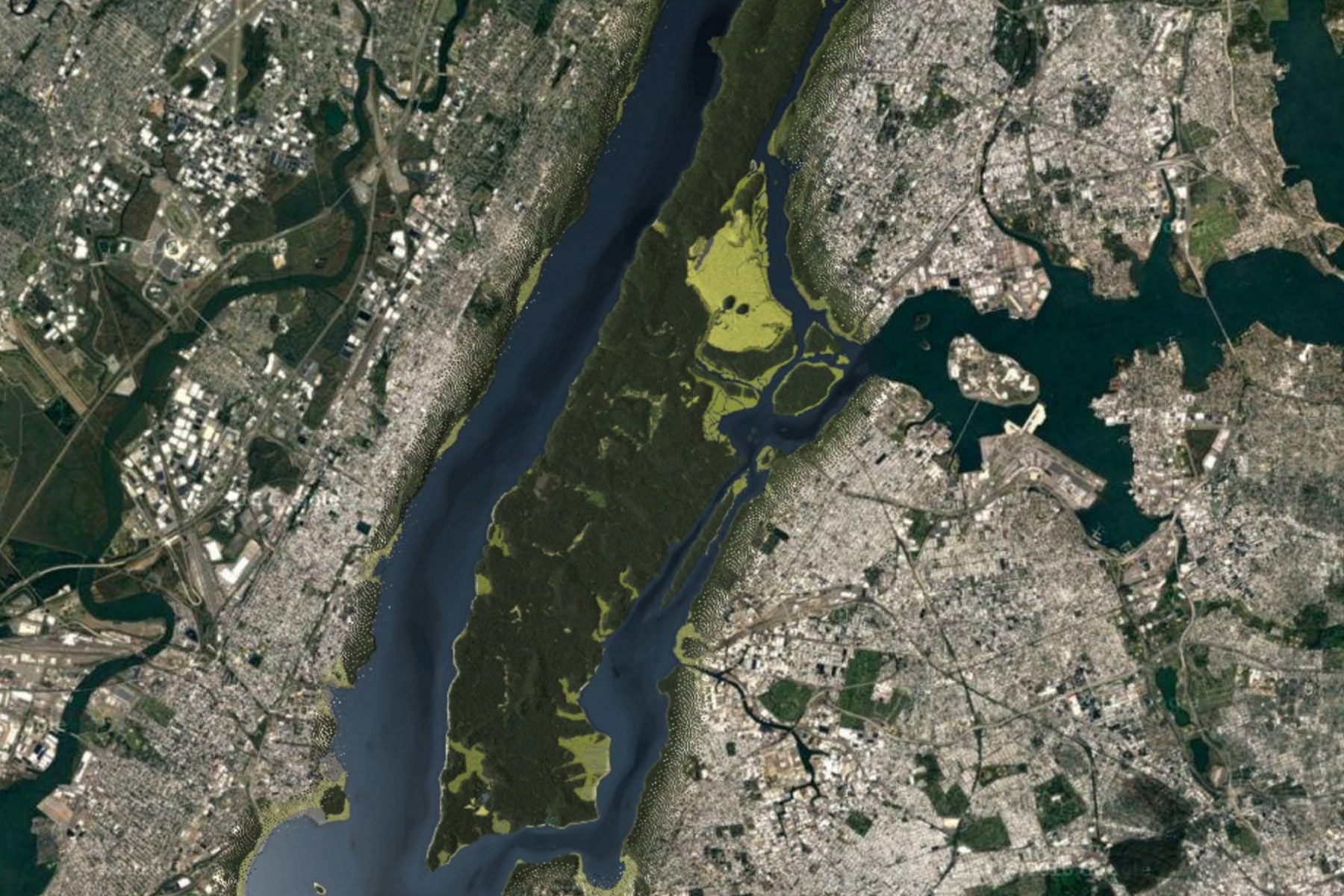“Suburbia is where they cut down the trees and name the streets after them,” runs the bumper-sticker-friendly Bill Vaughn quote. But Vaughn’s wry cynicism masks a sobering reality: Our day-to-day existence takes place in spaces that, not so long ago, looked and functioned very differently. Yet we hardly ever think about the ecosystems we build over. We inhabit human-dominated environments in which the natural world exists at a distance: through windows, on television, during vacations. Humans and wilderness maintain a binary separation. We’re saturated with images of species gone extinct, acres of ancient rainforest converted to farmland, melting glaciers. What’s the use in dwelling on a natural state that can never return?
According to Eric Sanderson, it’s not just useful: it’s a necessity.
Sanderson is a senior scientist with the Wildlife Conservation Society. He’s also the creator of the Welikia Project, an elaborate Google Maps reconstruction of Manhattan as it looked before Henry Hudson’s arrival in 1609. Based on a decade of research (resembling the work of an historian, rather than an ecologist (old maps, first-hand accounts, interviews), Welikia recreates a lost vision of Manhattan, one composed of marshes and forest surrounded by wide, meandering rivers. Click on any block, and you’ll find an inventory of the habitats and species that Hudson would have found on that spot. Welikia’s maps show places both foreign and familiar; the transformation of even the basic shape of the land is startling. When I showed it to a friend who lives in Harlem, she marveled, “My block used to be on its own island!”
Sanderson’s career has focused on the meaning of wilderness in a world increasingly under human control. Before creating Welikia, he published a sobering 2002 article on the human footprint, in which he and a group of colleagues calculated the percentage of the globe influenced by human activity. The tools he developed have since been used by other scientists to recommend sustainable solutions for housing and feeding a growing population. His more recent work—perhaps unsurprisingly for a conservation biologist based in the Bronx—focuses mainly on how cities can become more self-supporting and sustainable. Concentrated populations are a key to reducing the human footprint, and Sanderson’s current research explores how cities can house more people with less impact.
Where does Welikia fit in? As cool as may be to imagine the U.N. Building as a marsh occupied mostly by foxes, the obvious question is: What’s the point? Sanderson himself is careful to emphasize that the project doesn’t advocate returning Manhattan to an island of forests and swamps, at least not any more than historical markers are always meant to suggest returning to the past. However, he sees places themselves as powerful tools to connect viewers to the ecological forces that shaped, and continue to influence, the world in which they live. In the alternate reality of Welikia, natural processes reduce flooding, maintain breathable air, and regulate extreme temperatures. These processes, called “ecosystem services” in modern ecology-speak, can offer a way of assigning value to the otherwise-intangible benefits of intact environments.
In 1609 Manhattan, humans experienced wilderness as a practical, everyday reality; in 2016 Manhattan, it’s an abstract concept contained only in distant, picturesque locations. Welikia uses virtual reality to bridge these two worlds, bringing abstract ecological ideas into a concrete setting. Imagine using your phone to erase the buildings around you, instead seeing the marsh that occupied that land for centuries before, or hunting through the heart of a city for specters of the wild creatures that once lived there. Such experiences could create powerful connections to a world that many city-dwellers rarely, if ever, experience first-hand.
Rather than encouraging a return to the past, Welikia aims to inspire interest in a common future. As long as people and wilderness are separate, conservation remains abstract and disconnected, a luxury rather than a necessity. Welikia invites us not only to experience the spaces we occupy as they once were, but to imagine what they might one day become.







